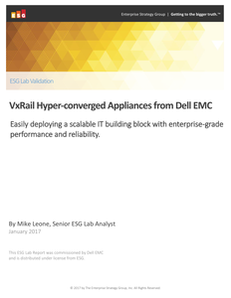As organizations continue to virtualize their infrastructures to gain higher levels of operational efficiency, VM sprawl and resource utilization are two key factors that can quickly create havoc for IT admins. In resource-siloed infrastructures, where multiple administrators are in charge of different pieces of the infrastructure, complexity continues to grow as mission-critical data sets and organizations grow. This is especially true in dynamic, mission-critical environments, where one wrong move or lack thereof could significantly impact an application, the end-user experience, or worst case, company revenue.
The impact of hyper-converged infrastructures on IT has been profound. In fact, 85% of respondents to a recent ESG survey already use or plan to use a hyper-converged solution in the coming months. Though that number appears high, it is not all that surprising. ESG also asked organizations to identify which factors drove them to deploy or considering deploying a hyper-converged technology solution. The list of responses covers pretty much every aspect of the technology lifecycle. From improved service and support, improved scalability, and increased agility of VM provisioning, to simplified management and speed and ease of deployment, organizations are rapidly adopting hyperconverged technologies, whether it be to house key business applications or to leverage a lower cost of entry for just getting started with virtualization. Read this paper to learn more.
Read this whitepaper to learn how to easily deploy a scalable IT building block with enterprise-grade performance and reliability.
Intel Inside®. New Possibilities Outside.
Intel and the Intel logo are trademarks of Intel Corporation in the U.S. and/or other countries.


